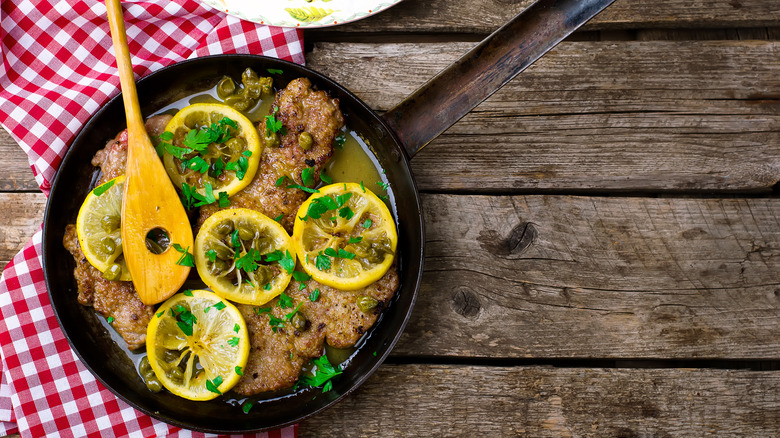The Veal Dish Martha Stewart Loved During Her Modeling Days
When Martha Stewart mentions or recommends a certain tip, trick, or cuisine, chances are most of us are going to put complete trust in it being good. But before Stewart was "the queen of homemaking," as many have dubbed her, she was a model in the 1950s and 60s. Modeling helped her get her foot in the door of the entertainment industry, and traveling the world as a model is what ignited her passion for cooking and global cuisine. With gigs at major companies like Chanel and Clairol, she was able to pay her way through college.
On an episode of "Martha's Cooking School," Stewart revealed that during her time as a model, she would frequent a famous New York restaurant, which was the first place she tried veal piccata. "All the models ate there," she explained. "So during my modeling days, I would go to Orsini's and have delicious veal with a lemony caper sauce and some sauteed spinach, and that was a fabulous lunch."
Orsini's, as it turns out, was a popular high-society restaurant that reached its height during the 1950s and 60s. Movie stars like Elizabeth Taylor, Yul Brynner, and Lauren Bacall all graced the tables belonging to Italian restaurateur Armando Orsini, who many say was the entire essence of the establishment. Orsini's had an impressive 31-year run until its closure in 1984, after which he moved to North Carolina to enjoy retirement before dying in 2011 at the age of 88.
Creating your own piccata
Though Orsini's has long been shut down and out of business, these days, Stewart has her very own recipe for a chicken version of piccata, which she details on "Martha's Cooking School," but you can follow these same steps with veal to replicate Orsini's more European rendition. As per Stewart's tips on the perfect saute for piccata, you'll first want to cut the chicken or veal horizontally to ensure thin, tender cuts of meat that are all the same thickness. Next, you'll gently pound the meat with a meat mallet in between layers of plastic wrap. For best sauteing practices, only quickly saute the meat in a mixture of both butter and olive oil to achieve a light golden-brown color. The butter will aid the meat in browning, while the oil ascends the smoking point, which helps make sure the butter doesn't over-brown before the meat is done.
After dredging the meat in flour, add it to the hot pan. If it makes a loud sizzle, this means you're on the right track. If you don't hear any sizzle or only a mild simmer, this can indicate that the oil isn't hot enough, which can in turn produce soggy food. Finally, you'll create the sauce by combining white wine, lemon juice, and salt capers. After taking the sauce off the heat, add in butter and stir until it's melted. Simply pour the sauce over the meat and top with fresh parsley.

